.png)
Aside from the obvious environmental benefits of reduced vehicle usage, walkable neighborhoods also have a variety of economic and health benefits.



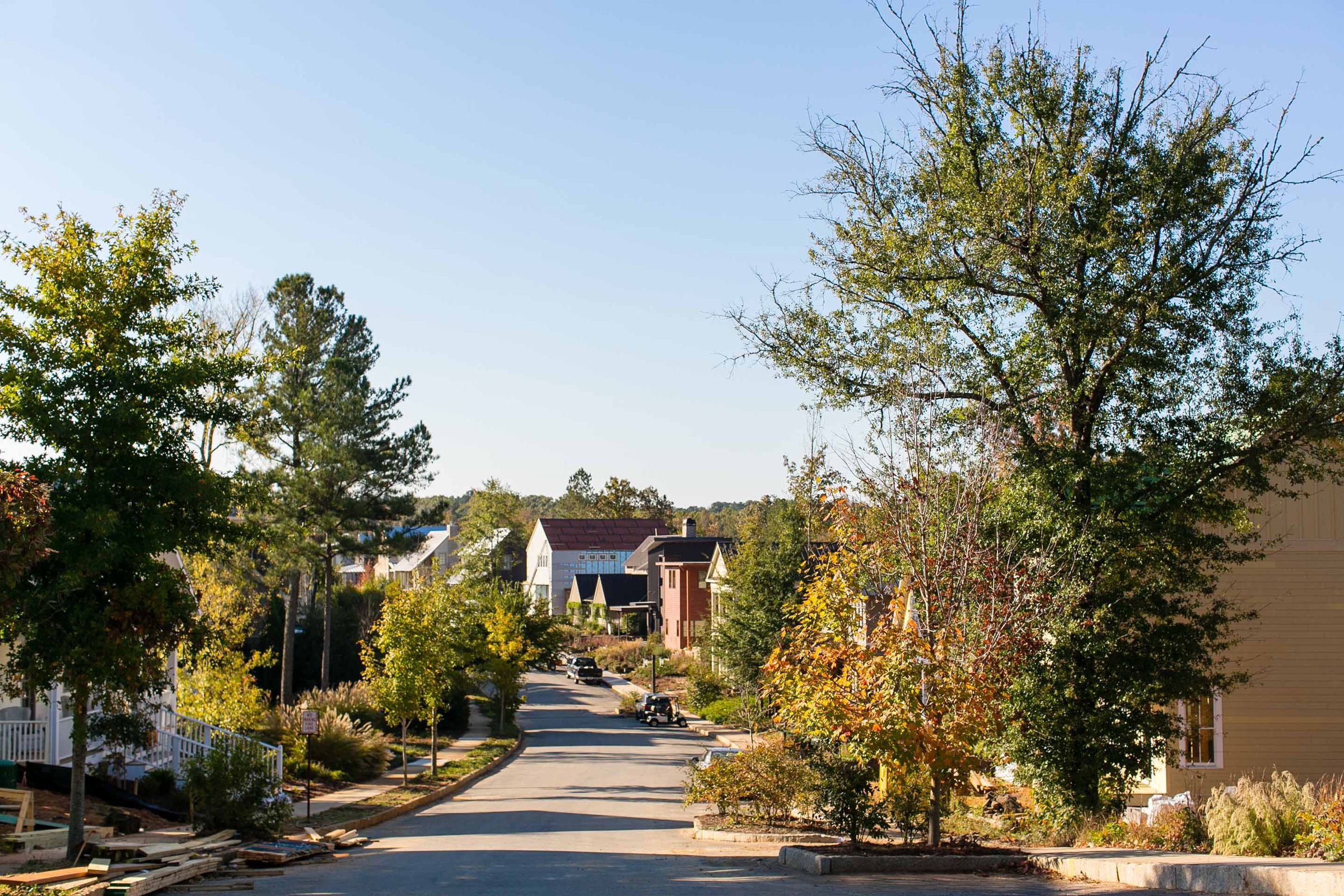
In the age of motor vehicles, having all of your necessary amenities—a grocery store, restaurants, schools, offices, and green spaces—within reasonable walking distance is a rarity, especially in the United States. Once cars started to become common in the second half of the 20th century, urban planners began to adopt a much more automobile-centric approach to development, leading to a marked reduction in walkability across the nation.
In recent years public sentiments surrounding walkability have shifted dramatically; people are frustrated with the notion of needing a car just so they can get anywhere that isn’t their home. This has led to a renewed interest in the walkable neighborhood—an age-old design strategy that prioritizes pedestrian-infrastructure and mixed-use development to create interconnected and easily-traversed communities.

For the most part a walkable neighborhood is exactly what it sounds like—a neighborhood that is walkable. But aren’t most neighborhoods walkable? In the practical sense, maybe, but not all neighborhoods are designed with walkability in mind. Even more so, not all are pedestrian-friendly, as some lack adequate sidewalks and lighting.
From a design perspective walkable neighborhoods differ from other neighborhoods because they are designed to be people-centric rather than car-centric. In practice this translates to communities whose day-to-day necessities—food, education, leisure, etc.—are within a safe and convenient walking distance, typically between 15 and 30 minutes from one’s place of residence. Walkable communities are most commonly found in and around cities and other urban centers, but they can also succeed in suburban areas.
“The most sustainable cities are truly resilient and include design for walkability, allowing people to get around on two feet with easy access to key business and cultural hubs without putting their health at risk,” Renee Schoonbeek, senior consultant stations and urban development at Arcadis, wrote in a previous gb&d article.
To be clear, walkable neighborhoods are not meant to be devoid of personal vehicles. They simply seek to reduce our day-to-day dependence on automobiles as our main mode of transportation by making it easier to access daily needs on foot.

Aside from making it easier for people to access necessary amenities, walkable neighborhoods have a variety of other benefits that make them both appealing and crucial to mitigating the effects of climate change. For the most part these advantages can be separated into three main categories: environmental, economic, and health-related.
Let’s take a look at a few of the environmental benefits associated with walkable neighborhoods:
Taking these benefits into consideration, it should come as no surprise that walkability is a fundamental component of the green building movement. “The most sustainable cities are truly resilient and include design for walkability, allowing people to get around on two feet with easy access to key business and cultural hubs without putting their health at risk,” writes Schoonbeek.
Walkable neighborhoods also boast several economic benefits, including:
There are a few important health benefits associated with walkable neighborhoods, including:
Walkable neighborhoods also help foster and encourage relationship-building between residents, which ultimately makes for a healthier, more connected community.
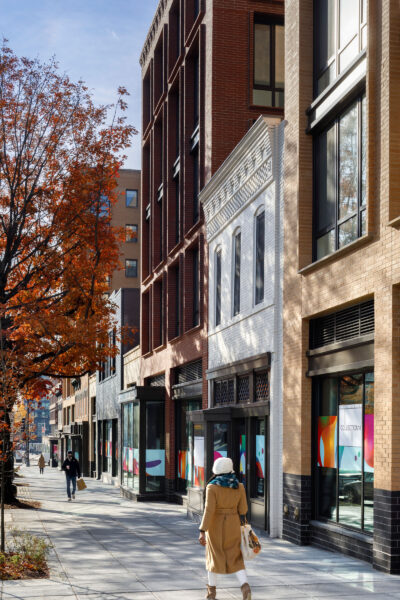
Walkable neighborhoods are not without their challenges—especially when it comes to navigating the nuances of land-use regulations and modern development practices.
Some of the biggest challenges that come with designing walkable communities stem from the limitations imposed by local zoning regulations. Urban planning officials have historically prioritized the approval of single-use development projects that fit neatly into one of five categories—commercial, administrative, residential, industrial, and green spaces—over mixed-use development.
This type of function-based urban planning is fundamentally at odds with the holistic sensibilities of walkable neighborhoods, which seek to include all of these development types (sans industrial works) within a single integrated community.
Fortunately this barrier can be overcome in part through the adoption of form-based zoning regulations that prioritize design standards over strict use regulations—a distinction that would make it easier to develop mixed- or multi-use projects, provided they meet the physical form requirements.
Form-based zoning would also make it easier to approve walkable neighborhoods that have been adapted from existing structures, as it would nullify the need for the lengthy change-of-use application process.
Historically walkability has gone hand in hand with gentrification, or the process by which poor urban areas undergo development that forcibly displaces the community’s original residents—of whom are oftentimes ethnic minorities and/or people of color. When walkable communities are established in existing urban areas, the very qualities that make them desirable often lead to increased property values, which typically ends up pricing out the surrounding area’s low-income residents.
As a result, these residents are forced to find affordable housing elsewhere, usually in areas with low walkability indexes; in short, inequitable design of walkable neighborhoods effectively excludes a large demographic from actually enjoying their benefits.
Portland, for example, is generally regarded as a highly walkable city thanks to its progressive design policies—but that’s not the case for all its citizens. Most of the city’s pedestrian-friendly areas aren’t actually accessible to marginalized communities and those living in low-income housing due to either distance or a lack of adequate transit options.
In order to avoid facilitating gentrification, walkable neighborhoods must include a variety of affordable housing options beyond the single-family home or high-rise apartment. Multi-family homes, duplexes, townhomes, and other missing-middle housing types are just a few examples of how walkable neighborhoods can be made more inclusive of low-income, multi-generational, and non-traditional families.
Now that we know the benefits and potential challenges of walkable neighborhoods, let’s talk about how to go about designing one.
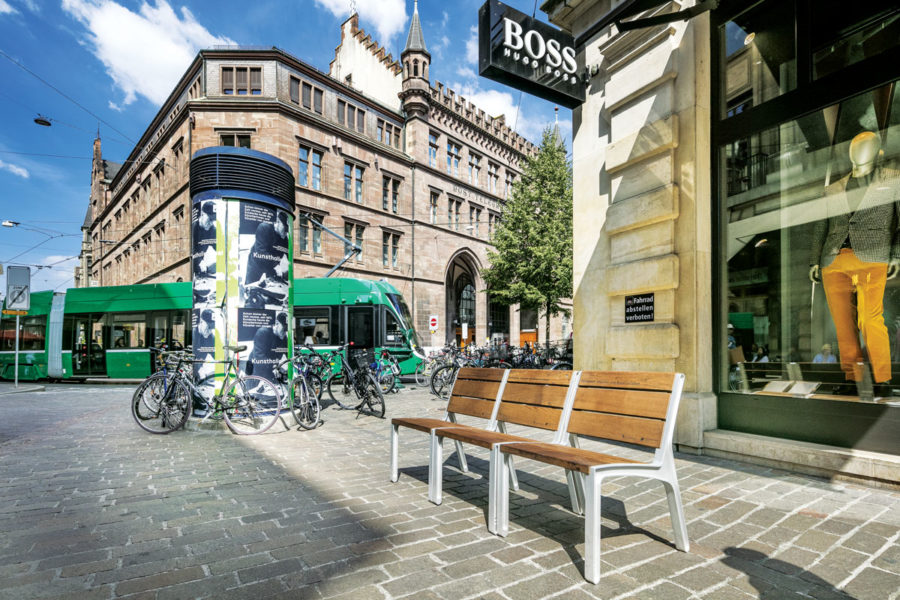
Walkable neighborhoods must be designed around pedestrian infrastructure. In practice this means making sure sidewalks and pathways are wide enough to accommodate heavy foot traffic and mobility aids, establishing dedicated bike lanes to keep cyclists safe, installing wayfinding tools (e.g. maps, signposts, etc.) to facilitate easy navigation, and including well-lit, sheltered rest areas to provide protection from the elements.
Pedestrian-friendly infrastructure also means designing well-connected streets with plenty of intersections. This helps reduce travel time and ensures there are multiple ways of getting from one place to another.
If pedestrians feel as though they can walk through their neighborhood safely, comfortably, and easily, they’re more likely to actually do so.
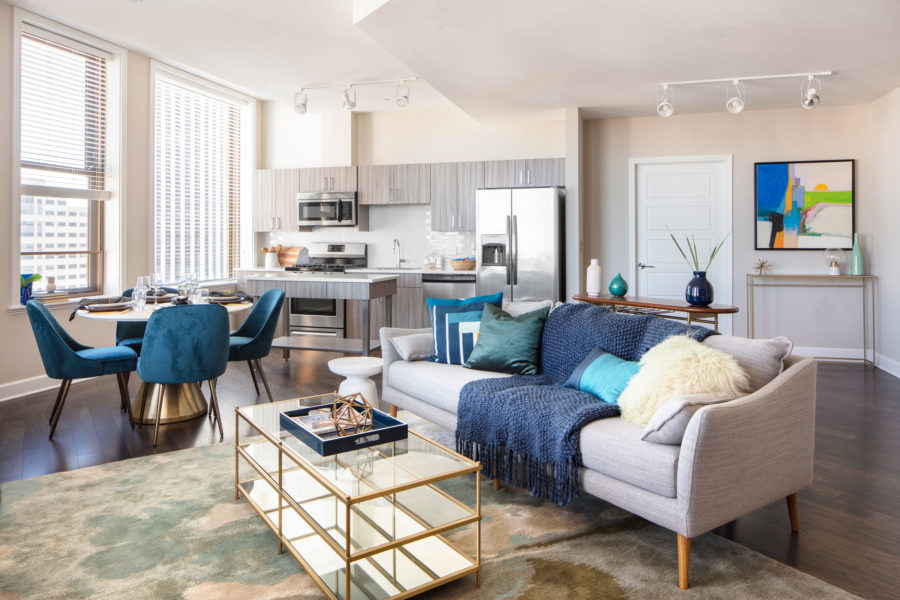
To avoid excluding low-income residents and non-traditional families from walkable neighborhoods, a variety of housing options should be made available. As it stands many urban areas suffer from a lack of missing-middle housing, a term used to describe any housing that falls between single-family homes and the standard high-rise apartment (e.g. duplexes, triplexes, courtyard clusters, and so on).
Walkable neighborhoods present a perfect opportunity to remedy this situation and should strive to include affordable housing options for people of all economic backgrounds and family structures.

In the same vein, a walkable neighborhood needs to have a wide range of places for people to walk to if it wants to succeed. “In order to encourage walkability, people need to have a reason to get outside and go somewhere, to walk. You really want to have a variety of mixed uses,” Stacy Olson, design resilience leader at Gensler, previously told gb&d. “Not everyone’s going to want to go to the same place, so having that rich diversity, whether it’s amenities or open space, you need to have safe spaces to walk and a wide enough sidewalk and protection from the elements.”
A diverse array of open spaces, restaurants, shops, and other amenities within walking distance ultimately makes a community more appealing to a wider range of people and allows occupants to meet their daily needs with convenient ease. It was for this very reason that Amazon decided to build their Frontier office tower in Seattle’s Denny Triangle, a vibrant mixed-use neighborhood whose central location affords easy pedestrian access to a range of restaurants, cafes, lounges, shops, and more.
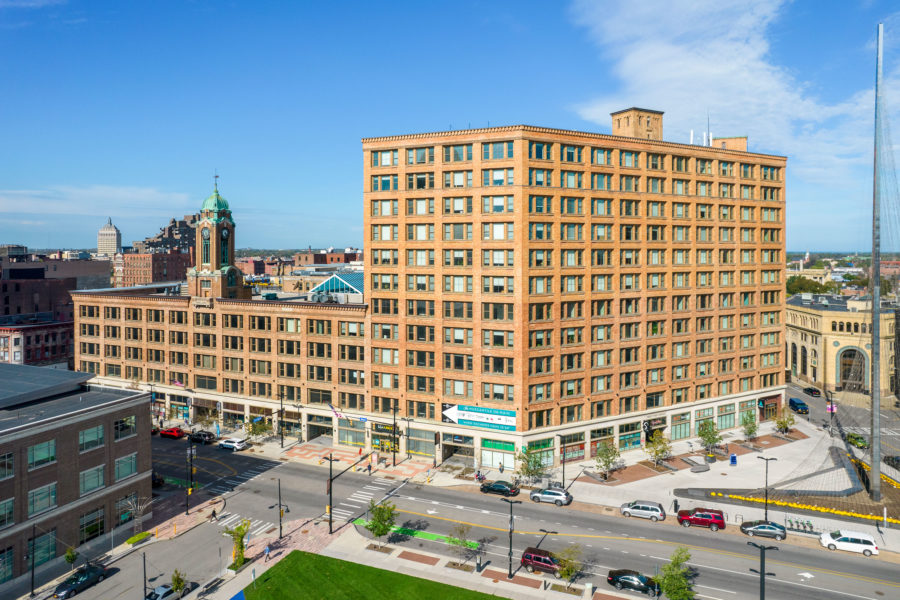
But a walkable community should not be insular. Residents should be able to easily access a variety of mass transit options, like public buses, the subway, or a monorail system that would allow them to venture outside of the neighborhood. This helps prevent feelings of isolation and can help facilitate economic growth by allowing people from outside the community to patronize its businesses and restaurants.
“People really value living in a community where they don’t need to drive to work. They’re biking, taking transit, and walking around,” Jeff Zbikowski, founder of JZA Architecture, previously told gb&d. “If you’re not spending 45 minutes a day each way going to the office, you have so much more time to go out and live in your community.”
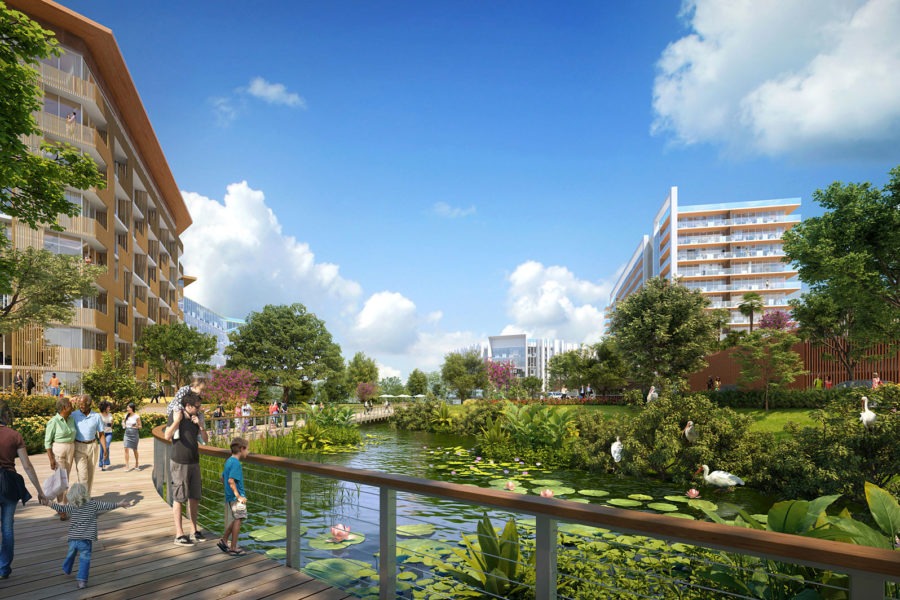
Something many urban areas lack is adequate access to green spaces, or those places where residents are able to interact with the natural world. When designing a walkable community, care should be taken to include parks, community gardens, walking trails, or the installation of green roofs, rooftop gardens, and living walls if existing space is limited. Studies have shown that proximity and access to green spaces helps improve mental and physical health, making for a happier and more productive community.
What’s more, green spaces also have a plethora of environmental benefits, as they help to regulate temperature, absorb carbon, and soak up rainwater.
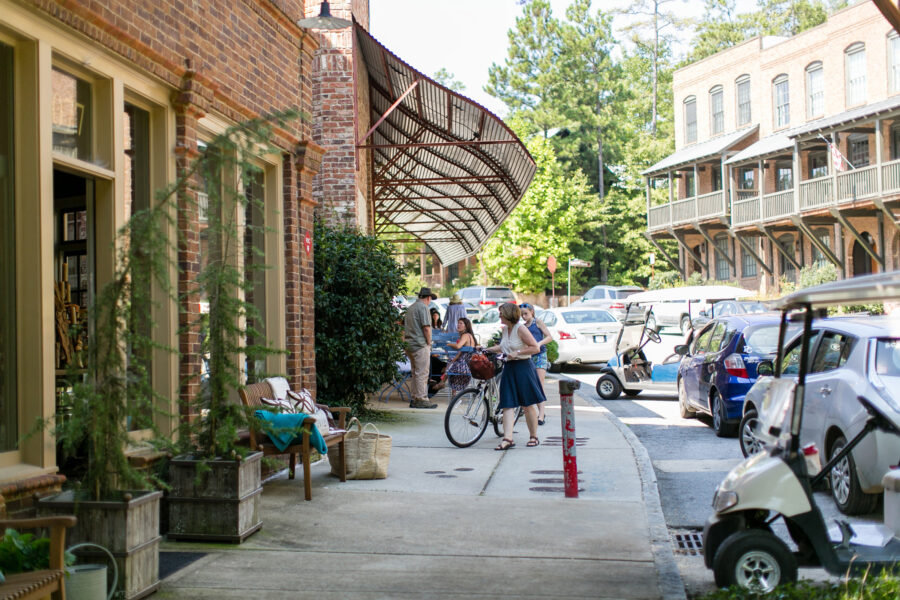
The first house at Serenbe was built in 2004 and today the community is home to over 1,000 residents. Photo courtesy of Serenbe
Modeled after the countryside villages of post-war England, Serenbe is a growing community on the outskirts of Atlanta whose philosophy is built on the notion that nature, wellness, and biophilia are key to the development of a successful, walkable neighborhood.
Serenbe began 2004 with a single house and has since evolved into a highly sought-after walkable community with more than 1,000 residents and an ever-revolving calendar of social events. Serenbe currently encompasses 2,000 acres (though it resides on 40,000 acres of unincorporated land) and is mixed-use in every sense, boasting everything from small organic farms and preserved woodland to homes, businesses, and social areas.
This diversity of function ensures that there’s no shortage of places to walk to in Serenbe. “We have what we call live/work, where the retail is on the street and you have two apartments above it—something that has all but disappeared. It was very common in the 1930s. We now have 18 of those live/work, and most of them are occupied with some sort of health services—from Pilates to a small animal vet, cold pressed juice, and so on,” said Serenbe founder and CEO Steve Nygren in a previous interview.
“We also have a martial arts place, an ice cream shop, a bagel shop, an interior design storefront, a pottery shop. We have all of these interesting people. Just by putting out the intent and moving forward, people are showing up.” Serenbe is even home to its own school, where over 300 children learn and cultivate a sense of appreciation for the land, art, and sustainable agriculture.
Beyond sidewalks, crosswalks, and pedestrian-friendly streets, Serenbe also boasts an ever-growing network of walking trails. “We’re extending our property and farmettes to the west, which takes us another mile-and-a-half closer to the Chattahoochee River,” Nygren says. “We’re putting more trails in, so we’ll be able to walk all the way to the Chattahoochee River, which, from the Blue Eyed Daisy [the town’s first restaurant/coffee shop] is about four miles, and we stretch a mile-and-a-half through our farmettes. This trail connectivity is larger.”
